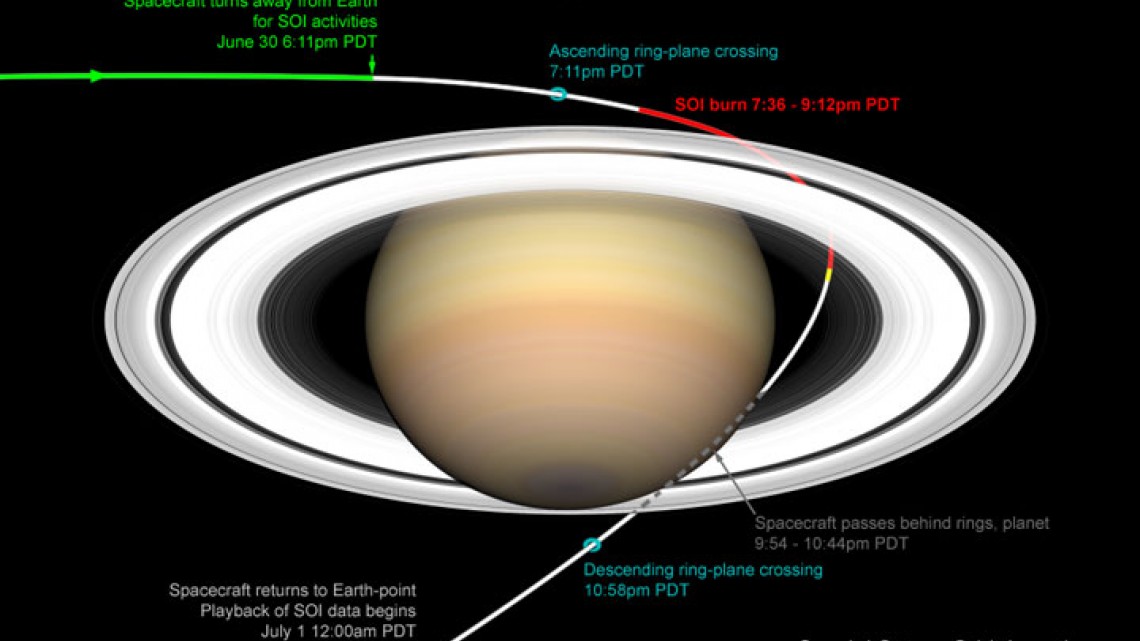
Cornell astronomer Burns gets 'hazard pay' to safeguard Cassini spacecraft's entry into Saturn orbit
By David Brand
PASADENA, Calif. -- When the Cassini-Hugyens spacecraft arrives at Saturn at 7:36 PDT (10:36 EDT) tonight (June 30), among the most anxious participants at the Jet Propulsion Laboratory here will be Cornell University astronomer Joseph Burns. As a member of the Cassini imaging team, he has been jointly responsible for observing the gaps in two of the planet's outer rings that the spacecraft will have to slip through to become the first mission to orbit Saturn.
The decision to go through these gaps in the ring debris was made on May 20 after multiple observations by Burns and his colleague at NASA-Ames, Jeff Cuzzi. "I am looking at the place where the spacecraft is going to make sure there is nothing there," said Burns, who is the Irving Porter Church Professor of Engineering, Theoretical and Applied Mechanics as well as professor of astronomy at Cornell, in Ithaca, N.Y.
The fear is that something might have changed since May 20 in one of the two entry rings, known as the "G" ring. "We ask ourselves the question: Are we basing our orbit insertion strategy on old data?" he says.
Well before Cassini began its approach to Saturn, Burns and Cuzzi were studying images of the area taken by the Voyager spacecraft (Voyagers 1 and 2 flew past Saturn nine months apart in 1980 and 1981), as well as ground-based observations and images taken by the Cassini camera every other day. "We were trying to see whether or not anything might have changed in the region to make sure it is still the safest place to go," says Burns.
Burns' work on estimating the hazards of the rings did not stop on May 20. "Much of the work I do on the mission is a question of hazards, and you want that information early in the mission. How big are the particles in the rings, what is their size distribution and orbits?" asks Burns. Burns and Cuzzi have been allocated time in the fall to get their new observations and to develop a model of where the debris in the rings is located.
The $3 billion mission is an international cooperation between NASA and 17 European nations. After a nearly seven-year journey, the spacecraft will make 76 orbits of the giant planet over four years, touring Saturn's rings, icy moons and magnetosphere and sending a probe onto Titan, the planet's largest moon.
The mission, said Burns, will transform our knowledge of Saturn, with the almost certain discovery of new rings and new moons beyond the 31 already known. Voyager, he said, "essentially took a couple of beautiful photos of a glorious dance as it went by. We are going to have the motion picture."
Other Cornellians on the Cassini imaging team are Joseph Veverka, professor and chair of the Department of Astronomy; Steven Squyres, professor of astronomy; and Peter Thomas, senior researcher in astronomy. Two other Cornell professors of astronomy on the mission are Peter Gierasch, on the composite infrared spectrometer team, and Philip Nicholson, on the visual infrared mapping spectrometer team.
Media Contact
Get Cornell news delivered right to your inbox.
Subscribe